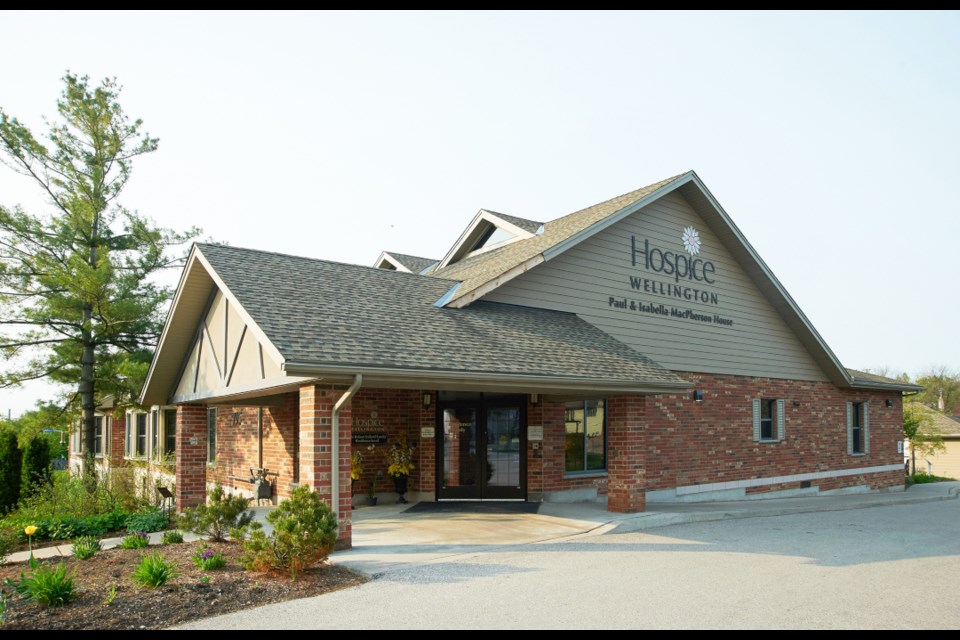Hospice Wellington and Guelph-Wellington Paramedic Services (GWPS) have embarked on a new pilot program to help paramedics better understand the palliative care approach.
Last year, GWPS and Hospice Wellington began a pilot program that trained all Guelph-Wellington paramedics to treat palliative patients at home, rather than transporting them to the hospital.
They can also directly transfer palliative patients registered with the program to hospice, if a bed is available. GWPS is one of the only paramedic services in the province able to transport patients in this way.
“This is unique, as paramedics are mandated to transport all patients to a hospital, by the Ministry of Long-term Care,” said Emily Cooper, deputy superintendent for the community paramedicine program. “However, the MLTC approved Hospice Wellington as an ‘alternate destination' for Guelph-Wellington Paramedic Service.”
One-hundred and twenty patients have been referred to the Paramedics Providing Palliative Care program in Guelph since it kicked off last year.
Across the province, programs like this have resulted in patients accessing care 17 times faster, according to Ontario Minister of Health Sylvia Jones. Ninety-four per cent of patients also didn’t need trips to the ER in the following days, which means fewer people taking up acute care beds, and fewer people unnecessarily dying in hospital.
But now, Hospice Wellington and GWPS want to take that one step further.
“Now we’re at a phase where we can add in that palliative piece, some education around death and dying,” Cooper said. “Obviously we’re familiar with the emergency aspect of that kind of work, but now we get to go right alongside hospice staff and see how it works on their end. Needs change at the end of life, and (this) better prepares us to support them.”
They’re doing this by having 25 paramedics work individual eight-hour shifts shadowing hospice nurses, “to gain a better understanding of approaches to care and family support, as well as medication administration,” said Pat Stuart, executive director at Hospice Wellington, which has 10 resident beds and numerous community programs.
The first training session was on Sept. 14, and will continue over the next several months.
“Paramedics are so well trained for emergencies and how to react. But palliative is so much different. So I’m hoping the techniques that we use, they’ll find useful in their practice,” Stuart said. Instead of trying to prolong life, the palliative approach aims to make the patient and family as comfortable as possible by preventing and relieving suffering through pain assessment and treatment. That includes psycho-social and emotional pain.
“The hospital is not made for that,” she said. “Emerge is fast-paced. The palliative patient, it’s not the right place for them,” because nurses and doctors in the ER don’t have the time to give palliative patients the attention they need to be comfortable.
Stuart added she hopes this will also help decrease the strain on ER wait times and acute care beds.
According to Healthcare Excellence Canada (HEC), three quarters of Canadians indicate they would prefer to die in their home, but 60 per cent of people who receive palliative care do so in an acute care hospital, often in the last month of their life.
Stuart has noticed more and more patients coming in later than they should.
Being trained on the palliative approach also enables paramedics to get patients started on appropriate treatment plans sooner rather than later – the latter being far too common.
“We might be able to get them started on it sooner, which will really help them and their family with their grief, planning their death, those things, ahead of time and not wait until they’re in a pain crisis.”
But even if the patients are only there for a handful of hours, Stuart said it makes a tremendous impact on both the patient and their family.
“I get it all the time, ‘why did I have to wait so long to feel so important and to feel heard?’ A lot of people don't feel heard. And I think that's one of the skills we do really well,” she said.
Stuart believes there is room to build on this collaborative approach, and that it’s needed to improve the healthcare system.
“We can't change the whole system. But if we work together, I think that we can make good things happen.
All referrals for the program come from Home and Community Support Services. You can learn more about how to make a referral here.
